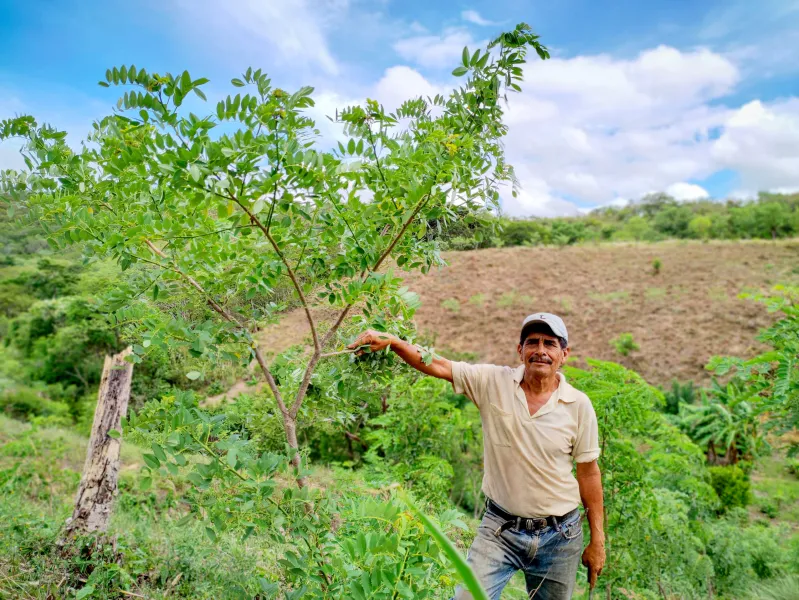2 min. read
·


Already 900+ portfolios built with 200,000+ carbon credits
Buying carbon credits with ecommit
Investing in carbon credits is investing in the future. Buy your carbon credits now, before prices rise. You can use your carbon credits immediately or save them for future use. You can manage your portfolio of carbon credits via your own dashboard. Payment can be made in one lump sum or in installments.
Your purchase is easily arranged: enter the amount you wish to invest, indicate your payment preference, and fill in your details.
Would you like to invest in a specific project? We also offer customized solutions and can tailor a portfolio to suit your company. Please contact us.

STEP 1
Indicate how much money you want to invest or how many carbon credits you want to buy
STEP 2
Indicate how you would like to pay: in one lump sum or in installments
STEP 3
Fill in your details
STEP 4
Done! You will have access to your own dashboard where you can manage your carbon credits

Customization
Carbon credits for every purpose
Since every business has its own reasons for purchasing carbon credits, ecommit offers you the option of using your carbon credits immediately or at a later date. This allows you to use your carbon credits right away to offset your Scope 1 and 2 emissions, the emissions from your vehicle fleet, from your employees, or from an event, for example. You can also purchase carbon credits and use them later in your business. Or you can choose not to neutralize your carbon credits yourself, but sell them to someone else. Whatever your strategy, you can easily purchase your carbon credits online.

Consultation
Personal advice
Are you planning to invest in carbon credits and would you like to discuss your options? What are you currently using in your business and what should you purchase for the coming years? We will discuss your specific situation with you in a personal consultation. We tailor our carbon credit portfolios to your needs: we take into account what is important to your company, such as the type of climate project, the country, or one or more SDGs. Feel free to contact us.

Why buy carbon credits?
Carbon credits are the ideal way to take immediate action for the climate. If you want to stop contributing to air pollution, then invest in climate projects. These projects are essential for removing carbon from the air and can only get off the ground with sufficient funding.
When you purchase carbon credits, you can also choose to use them in your business at a later date. This way, you are still directly enabling climate projects. At the same time, you are ensuring your business a favorable purchase price.
It is also possible to sell the carbon credits you purchase to another party that needs carbon credits, rather than using them yourself. Your investment will go towards climate projects now, and you will benefit from the expected price increase in the market.*
*Source: EY. Essential and still evolving: The global voluntary carbon market outlook 2024

Why choose carbon credits from ecommit?
Ecommit has years of expertise in the field of carbon credits. We know the market and conduct a thorough risk assessment before investing in a climate project.
We take your company's wishes and needs into account in our proposal for a carbon credit portfolio. All transactions are tracked by blockchain.
You can view all information about your carbon credits and the projects via your own dashboard. You can decide what to do with your carbon credits at any time. You can use them in your company, keep them for later, and/or offer them for sale to another party.
Buy your carbon
credits now
Invest in carbon credits before prices rise. This allows you to implement your sustainability strategy while enabling essential climate projects.
Reliable
The carbon credits come from certified, registered projects that guarantee carbon offsetting.
Quick and easy
Purchasing carbon credits is easy. Order online or make an appointment for a customized carbon credit portfolio.
Strategic investment
Carbon credits are an investment and create value for your company. Invest now and stay ahead of price increases.
Flexible
Decide at any time what you want to do with your carbon credits: use them in your business, retain them, and/or offer them for sale.

Carbon credits
What are carbon credits?
Nature offers various ways to remove carbon from the atmosphere. Plants, trees, and oceans can all store carbon. Additionally, there are technological solutions, such as machines that capture carbon from the air. If your company financially supports a project that either removes carbon from the atmosphere or prevents additional carbon from being released, you receive a certificate for it. This is known as a carbon credit. One carbon credit represents one tonne (1,000 kg) of carbon emissions removed or prevented.

Ecommit
About ecommit
Ecommit connects climate projects and companies. We conduct extensive research into climate projects in the Netherlands and abroad that remove carbon from the air or ensure that less carbon enters the air. We select ambitious, reliable projects and purchase carbon credits from them. You can then purchase the amount of carbon credits that suits your company. Do you have specific wishes for a project, such as a certain type and/or location? We also offer customized solutions and can tailor a portfolio to suit your company.
Projects ecommit collaborates with
When you purchase carbon credits through ecommit, you contribute to significant climate projects that remove carbon from the atmosphere or prevent carbon from entering the air. The projects we partner with are located both in the Netherlands and abroad. Here are some of the various projects:

Paulownia Plantations Croatia
This ambitious project in Croatia focuses on the Anna Paulowna tree (Paulownia), a species known for its exceptional carbon absorption capabilities.

Scolel’te
In the Mayan language Tzeltal, Scolel’te means 'the tree that grows'. This beautiful project in Mexico uses reforestation and agroforestry.

Paulownia Bos Deest
This innovative project in Deest, Netherlands, uses Paulownia trees, which are known for their exceptional carbon absorption capabilities.

Temporarily sold out
Blijvend Grasland
Blijvend Grasland is a collection of excellent projects in the Netherlands. These projects use grasslands to store carbon in the soil.

GreenTrees ACRE
GreenTrees encourages individual landowners to plant forests. The trees remove carbon from the air and are a source of income for the owners.

Carbono Rancho Victoria
Where trees were once illegally logged, pines, eucalyptus, and acacias now remove carbon dioxide from the air.
What do carbon credits offer your company?
Appeal to partners
Sustainability is increasingly important to partners and suppliers. By purchasing carbon credits to offset emissions, you demonstrate that your company is actively engaged in sustainable practices.
Employee engagement
Employees often feel more connected to a sustainable employer. Carbon offsetting also attracts new, talented individuals who align with your company's values.
Customer attractiveness
Businesses and consumers are becoming more conscientious and prefer companies committed to sustainability. Many customers are willing to pay a premium for sustainable products and services.
Product differentiation
Carbon credits distinguish you from competitors. By prioritizing sustainability within your business, you add value to your product or service and gain a competitive edge in bids.
Critical for financing
A sustainability plan is highly valued by banks and other financiers. Efforts to avoid, reduce, and offset carbon emissions are often a requirement for funding.
Forward-thinking image
Sustainable business practices benefit the climate and enhance your brand. Purchasing carbon credits shows that your company values leading-edge initiatives and is committed to staying ahead in the market.





Frequently asked questions about buying carbon credits
When you financially support a project that removes carbon from the air or reduces carbon emissions, you receive a carbon credit. One carbon credit equals one tonne (1,000 kg) of removed or prevented carbon.
Yes, there are various types of climate projects across different countries. These projects employ different methods to offset carbon emissions. Some projects focus on agriculture, agroforestry, or reforestation to offset carbon. There are also blue ocean projects that utilize opportunities from seas and oceans. Biochar projects involve converting organic waste materials into biochar, a substance that can sequester carbon. Direct Air Capture projects use machines to remove carbon from the air. REDD+ projects aim to prevent deforestation and forest degradation.
Carbon credits via ecommit always come from multiple climate projects, except in the case of customized solutions. The price is a weighted average of those projects. In October 2025, a carbon credit at ecommit costs €20 (excluding VAT). One credit represents one tonne (1,000 kg) of carbon emissions removed or prevented. The price per tonne of carbon is likely to rise in the future.
When you contribute financially to a project that removes carbon from the air, you receive a carbon credit. One credit = one tonne of carbon emissions removed or prevented. At ecommit, you can purchase your carbon credits online. In the purchase module, enter how much you want to invest, indicate your payment preference, and fill in your details. Would you like advice or a customized solution? Please contact us.
Of course, you want to be sure that the project you are contributing to actually exists and effectively offsets carbon. Ecommit conducts an extensive risk assessment before investing in a project. We only work with certified climate projects and registered carbon credits. All transactions are tracked by blockchain.
At ecommit, you can purchase your carbon credits online immediately. In the purchase module, you select how much you want to invest and enter your details. Once you have placed your order, the certificates will appear in your own dashboard.
You can purchase carbon credits via ecommit, the leading B2B platform for carbon credits. By purchasing carbon credits, you are investing in important climate projects that remove carbon from the air. The projects that ecommit collaborates with are located both in the Netherlands and abroad.
You don't have to instantly use the carbon credits you buy. By purchasing them now, you can be sure that they are available and affordable. This allows you to build up your own carbon credit stock for future use. If you don't need all your carbon credits yourself, you can also sell them.
2 min. read
·2 min. read
·Questions about addressing carbon emissions?
Do you have a question or do you want more information? Contact us for a free consultation.


